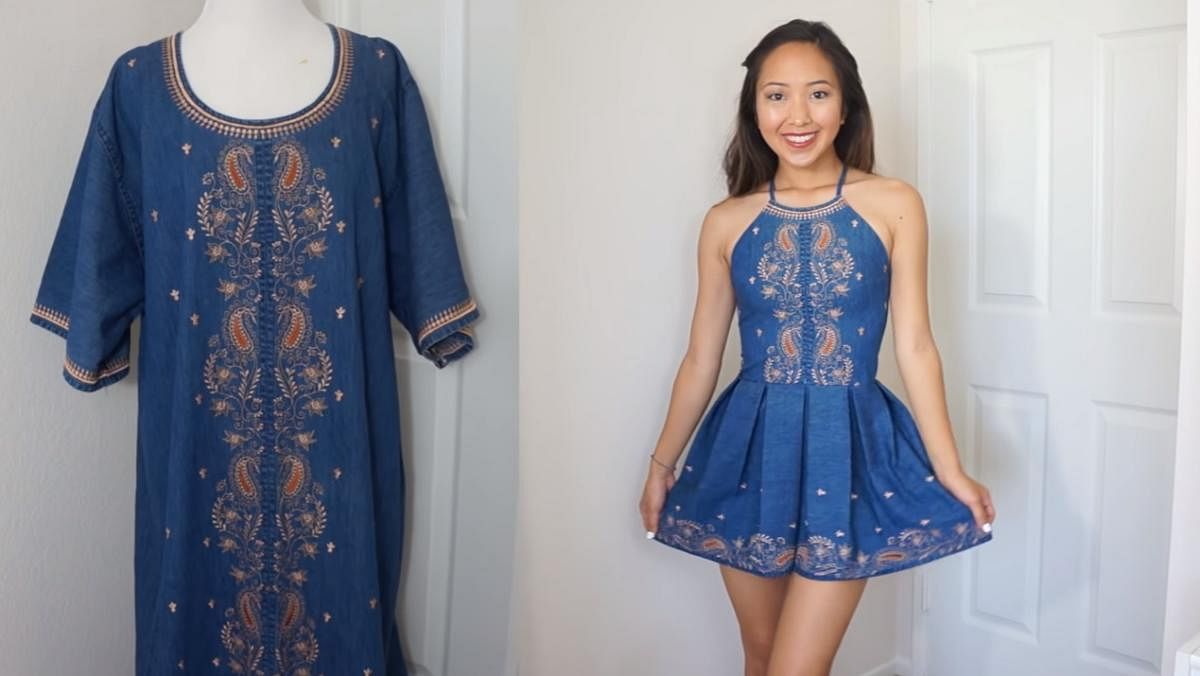
In a world where fashion trends change at breakneck speed, it is no surprise that the fashion industry is generating a whole lot of waste.
With consumers becoming conscious of the environmental crisis, reuse, reduce, recycle, repeat is a mantra many individuals and companies are following.
Revastra is a slow fashion research lab, created by Gurgaon-based Sathya Bhavana. The brand redesigns, repurposes and upcycles old unstitched clothing such as saris, dupattas, and shawls. “I want to work with the clothes, but I also want to create stories with them. I generally make garments on an individual basis, out of clothes that have a certain sense of nostalgia attached to them,” says Bhavana.
She relies on zero-waste techniques such as origami and pleating, which allow maximum usage of fabric as well as great design.
“To reconstruct something, you have to deconstruct it. Breaking it down to geometry is enjoyable to me. I found working with ready-made clothing tedious, which is why I work with unstitched fabric,” she explains.
She also conducts workshops to teach people to upcycle clothes that matter to them. “This also works as a way to declutter your life,” she explains.
Not just clothes
Odette Katrak, co-founder of Beautiful Bengaluru, says clothes don’t have to be refashioned into new garments. Old jeans and t-shirts can be made into bags.
She also collaborates with an organisation called The Spinning Wheel to create products out of scrap material collected from tailors. The studio creates stools, coasters, folders, and knick-knacks that can brighten up your house.
“The more people upcycle, the less the pressure on resources. Use less and reuse more is a great mantra to live by,” she remarks.
The way forward?
People need to learn to value their old clothes. “It takes so much water just to produce cotton. Creating clothes out of cotton produces more waste. When you discard clothes, you are just furthering the cycle. Instead, give them away to people or organisations that make something out of them,” says Odette.
She also upcycles clothes for her own use. “My mom has this beautiful pale green chiffon sari that was stained. I could not throw it as the sari was a part of her wedding trousseau. So I had it dyed in a wine red colour, and now it is easily one of my favourite saris,” she says, explaining why upcycling is about so much more than simply making conscious choices.
Bhavana says upcycling is no longer a choice but a necessity. “We are constantly generating waste, and clothes are just a part of it,” she says.
Where to shop
Pomogrenade, a store based in Nagarabhavi in Bengaluru, sources fabrics locally, produces them at a fair trade manufacturing unit, and ensures very little to no waste is produced. It has a line dedicated to upcycled garments.
Rimagined, run by Shailaja Rangarajan and based in the city, curates sustainable upcycled products ranging from decor to clothing and accessories.
Doodlage uses leftover or biodegradable fabric made from corn and banana fibre to create one-of-a-kind apparel line.
Chaiim Foundation works towards rehabilitating survivors of human trafficking with a programme that provides them with employment. Apart from garments, it also makes reusable pads out of leftover fabrics.
Refash is a platform where you can discover designers and brands who create contemporary pieces of fashion from waste.
What is upcycling?
Heard the phrase ‘One man’s trash is another’s treasure’? This is the basic mantra of upcycling, the process of reusing discarded products by transforming them into new products. Upcycled fashion generally involves refashioning new garments out of old, torn and stained ones.
Upcycling, unlike recycling, does not break down the fabric into fibre to change it into another material. Therefore, it is less resource-intensive and more environment-friendly.
YouTube inspiration
YouTube channels such as ‘Thrifted Transformation’ and ‘Looksmart Alterations’ offer ideas on how to upcycle garments. There are also many channels that attempt thrift flip, where they buy clothes from the thrift store, refashion it and either sell it or keep it for themselves. These channels allow people to get a glimpse into ways in which they can transform their own clothes.
Fast fashion turns slow
The Swedish multinational retail company H&M launched the Garment Collection Program in 2013, an initiative that encourages consumers to bring in their old clothes in lieu of a 15 per cent discount voucher.
The brand sorts the collected apparel and shoes into three categories in accordance with the EU waste hierarchy-- Rewear, for ones that can be used as second-hand clothing; Reuse, for ones that can be turned into other products, and Recycle, for the remaining ones that get shredded and turned into other material.
The brand also launched its Conscious Collection in 2018. It features clothes made from environmentally smarter materials. However, critics say the brand continues to encourage buying more clothes with its discounts.
Buying up by 60 per cent since 2000
Research shows the average consumer now buys 60 per cent more items of clothing than in 2000, but each garment is kept for half as long.
Studies also show that 57 per cent of all discarded clothing ends up in landfills. If not discarded as trash, unwanted apparel is often donated to thrift stores or for a cause.
However, studies show that only about 20 to 30 per cent of donated clothing is actually reused. While staying on top of the fashion trends and looking presentable is important, it is also important to think about where the clothes you discard are going.
By 2050, India is reportedly going to need a landfill the size of New Delhi, according to a joint report by Assocham and PricewaterhouseCoopers.
For many, the numbers are not easy to ignore. Fast fashion has become less desirable. For those looking for innovative ways to change their wardrobe, designers and brands are pitching a new way forward—upcycling.